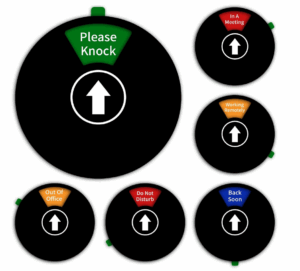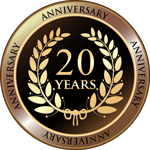Did you know? There’s a Tug-of-War going on in your workday.
Do you feel more rushed and chaotic in your workday or do you feel more calm and on schedule?
Is your whole day typically taken over by “fires” and “squeaky wheels?” or do you get quiet, closed-door time to work on your most important tasks and projects?
Do you go home feeling happy and accomplished or frustrated and behind?
These are the two sides of the rope in this Tug-of-War: reactive vs. proactive. And Reactivity is NOT the activity you want.
Which side is winning in your workday?
I know you’re trying to keep up with email that’s pouring in, phones that don’t stop ringing (or dinging), and visitors who are asking questions.
You want to be helpful and responsive, but you might be stuck in a cycle of reactivity—and fear.
😳 Fear that you’re not going to be able to deliver.
😳 Fear that you’re not going to appear available or as a team player.
😳 Fear that if you DON’T jump at every little thing that pops up, you’ll lose even MORE control and things will pile up even MORE.
Saying ‘yes’ and being there for others are nice gestures, but when you sacrifice too much of your time to do these, you create too much reactivity.
The definition of “react” is “to act in a reverse direction or manner, especially to return to a prior condition.”
At work, when you’re reactive, it means you’re not moving forward or making noticeable, tangible progress on your projects and daily priorities, and instead you’re stuck spinning your wheels.
To improve your current circumstances, choose to make a change.
Choose a new direction = = > proactivity over reactivity
Choose how you use your time = = > effectively vs. ineffectively
Choose what to work on = = > what’s important vs. what’s easy
But HOW?
If you want to make those improvements, but you’re not sure HOW, first reflect on what you’re doing today. Increase awareness about HOW you’re working, which is based on long-standing habits that have driven you for years and the choices and decisions you make every day.
Stop for a minute to consider…
❓ What are your current results. Are you happy with them?
❓ What are your current processes? What’s working? What’s NOT working? And why?
❓ What are you willing to say or do to protect your time and focus, and stand up for what you want or need?
Are you afraid to set boundaries and negotiate your time? Answer the following questions to find out.
1️⃣ Are you afraid you won’t appear as “available” or as “a team player?”
Feeling guilty about shutting your door? Or disappearing for any length of time to focus on your work, uninterrupted?
If you’re available 100% of the time, your all-day, open-door policy is an invitation for constant interruptions, which will wreck your productivity.
Please shut your door for short stretches of time throughout each day. Ideally, this is for 1-1 ½ hours in the early part of the morning and also in the early afternoon.
Then set expectations. Clearly communicate to co-workers what a closed door means and how long your door will typically be closed so you don’t leave people guessing or worrying that they’ll never get to speak with you.
Use a Post-it Note, a mini traffic light, or a spinnable Do Not Disturb sign on your door or doorframe to communicate your availability. Below is an example of one you can get from Amazon.
🔑 The Key to Success with this Strategy: Ditching the head trash that tells you that you can’t do this.

2️⃣ Are you afraid you won’t seem “responsive” to email?
Without an easy email process to follow, you’re likely to fall into two unproductive camps.
One is when you start your day in the Inbox and never seem to get back out. Or two, you manage to get out of the Inbox to work on something else, but when you see a pop-up notification or get a ding, you POUNCE on it.
Both of these moves may seem “responsive,” because you’re constantly connected to email, but they’re actually more “reactive” and they’re costing you time that could be better spent keeping your focus and getting your most important tasks accomplished.
Instead, use short blocks of time to alternate your focus throughout the day between tasks and email.
This is what clients do when they learn Taskology. When they’re focused on their Task List, they’re getting things done. When they switch over to their email process, they’re reviewing a batch of email that recently rolled in and they’ll go one by one with a process that gets them back to zero, because they’ve already reached it.
If you’re not constantly swimming around in your Inbox, it’s doesn’t mean you’re “unresponsive.” If you don’t answer emails for 30-60 minutes or more—like when you’re in a meeting—it just means your time is committed elsewhere and you’re using it wisely.
🔑 The Key to Success with this Strategy: Having a task list filled with true tasks that are easy and achievable, including those from email.
3️⃣ Are you afraid to make someone wait?
When you get interrupted, you might automatically set your work aside to avoid making someone else wait.
Instead, if you’re working on something REALLY important, ask if you can get back to the other person in 30 or 60 minutes, or later in the day. Negotiate your time. Stand firm and ASK.
An example would sound something like this:
“Thanks for stopping by. I’d love to discuss that with you. But I’m right in the middle of finishing up something really important (or I’m on a deadline.) Can I stop by your office in about 30 minutes when I’m finished?”
Others are likely to accommodate and you’ll feel GOOD about getting something accomplished, while still honoring their request. But you won’t know unless you ASK.
🔑 The Key to Success with this Strategy: Knowing the IMPORTANCE of what you’re working on NOW and NEXT and comparing that to the interruption.
4️⃣ Are you afraid to delegate?
Where is your time best spent? Where is your time being wasted?
If you have one or more team members to delegate to, look for opportunities to delegate. Teach others how to handle certain tasks so your time is freed up to do the things ONLY YOU can do.
Ensure your team members get enough practice and time for Q & A. Confirm that they know how to do a task and are able to work autonomously. Let them know what they’re authorized to do without you. This is your chance to free up some time to reach your potential while empowering others to reach their potential, too.
🔑 The Key to Success with this Strategy: Understanding that investing time in teaching now is worth the results you’ll gain in the long run.
5️⃣ Are you afraid you’ll FORGET a new task if you don’t do it RIGHT NOW?
If you tackle new tasks as they show up, you’re treating ALL tasks like they have the same level of priority, but they don’t.
What you need is a task management approach that allows you to document, prioritize, and plan action for ALL of your tasks in one central, digital task system.
This means…
…planning action for tasks on different days into the future. This makes you pick and choose what you’ll do today or not—otherwise known as prioritizing.
…getting a bird’s eye view of your responsibilities no matter where the tasks came from or how far out in the future you’ll take action.
…having a strong plan and a place to start each day without missing, losing or forgetting anything.
…being responsive on new tasks without losing track of everything else you had planned to do today, next week or next month
Does your current task management approach allow you to do all of this?
🔑 The Key to Success with this Strategy: Choosing ONE digital platform where you can start building your list.
(And if you want help on this strategy, be sure to get the Fast-Action Formula for Tasks. It’s a mini-crash course in Taskology® Task Management for only $149.)
What adjustments can you make today (and head trash you can toss) so you protect more time and use it to make more powerful progress every day?
Get comfortable with setting boundaries and negotiating your time.
You’re in charge. Don’t be afraid to stand up for what you need. You’ve got this.



